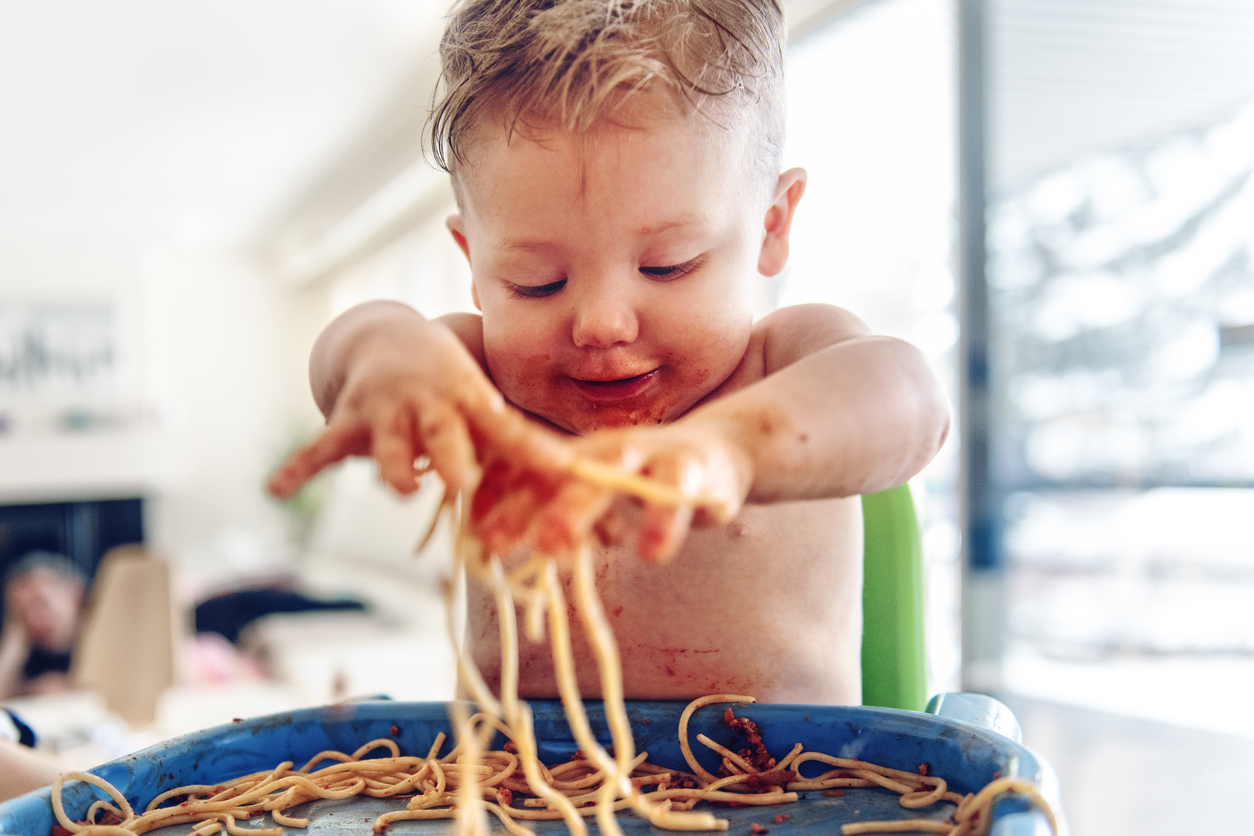
In this Ask an Expert, we ask Vanessa Thornton, RD, CSP, a registered dietitian and Board-Certified Specialist in Pediatrics—and the instructor that leads our Nutrition classes— what parents should (or shouldn’t!) do when their toddler won’t use utensils.
Question: Help! My toddler only eats with their hands vs. using a utensil. What should I do?
Vanessa’s Answer: Don’t panic! Learning to use utensils is a skill that takes years for most toddlers to master. Many children aren’t using forks, spoons, and knives with precision until age 5. In fact, allowing toddlers to use their hands to explore and eat food is actually a very important step to learning self-feeding and avoiding picky eating. This is because it allows them to get up close and personal with different textures, temperatures, and flavors.
That being said, we do want children to be working on these skills throughout toddlerhood so they can eventually master the art of eating with utensils. It is very normal and common for toddlers to prefer using their hands simply because it is easier, but by age 2 your child should at least have the ability to scoop food and bring it to their mouth, even if it isn’t pretty.
If your child doesn’t seem to be able to do this despite practice, or if they seem visibly upset when you offer a utensil, it may be time to talk to your pediatrician.
So, how do you get your child up and running with utensils?
Offer them early and often. I recommend starting with spoons first, as early as 6 months, then forks around 10 months, and knives closer to age 2.
Remember that eating from a utensil like a spoon might seem simple to adults, but actually requires many new steps and skills: picking up the spoon, dipping it into food, lifting it back up, successfully aiming the food to the mouth (without dropping it on the way!) closing their mouth around the spoon, keeping the food in their mouth and removing the spoon again. That’s a lot!
If your toddler seems overwhelmed by all of these, you can help them out by breaking it down into pieces. Try pre-loading the utensil for them or helping them guide the utensil toward their mouth, but allow them to take over from there — never force food into your child’s mouth.
As I mentioned, most toddlers will continue to prefer to use their hands simply because it is easier, but you can encourage them to practice spoon, fork, and (eventually) knife skills with a few of the following tricks:
- Try to feed your child before they are starving or exhausted. Tired, hungry toddlers are not interested in learning new skills and are more likely to throw those utensils right on the floor.
- Model, model, model! Make sure you are sitting down at the table and eating with your child so they can see how you use utensils to feed yourself.
- Be consistent. Even if you know your child will use their hands, put out utensils with their meals. They can’t learn to use them if they aren’t able to try!
- Make it fun by offering unexpected items as utensils: chopsticks, toothbrushes, paint brushes, and mini spatulas are all great tools to get kids curious about self-feeding.
While it can be a long (and messy!) road to perfecting the use of utensils, remember that any self-feeding your child is doing is helping them to develop independence, motor skills, and curiosity about different food textures and flavors. Offer utensils early and often, and model how to use them so your child understands how they work. And remember, have fun with it!
If you’re wondering just how to introduce those utensils, or plates and cups, check out our class (led by Vanessa!) Introducing Cups, Utensils & Mealtime Necessities. This class will help you set your baby up for self-feeding success by telling you when, why, and how to introduce straw cups, open cups, utensils, plates & bowls. Plus, get a downloadable list of Vanessa's top picks when it comes to choosing which mealtime accessories to purchase.


